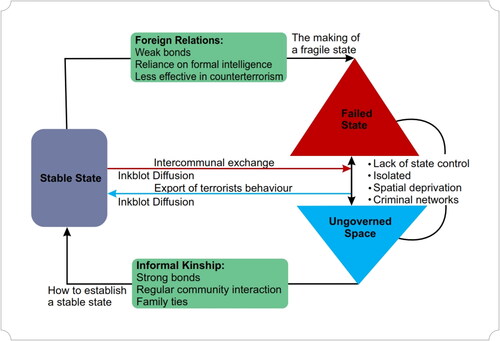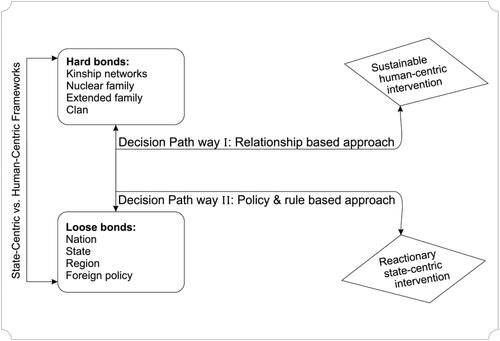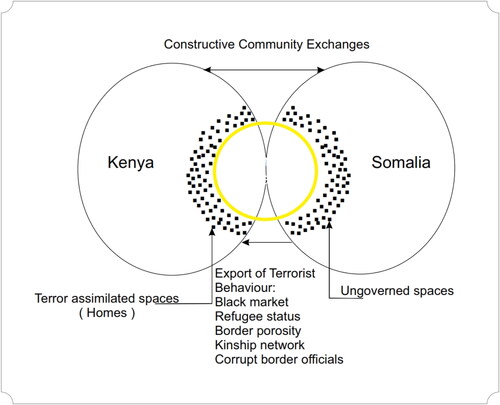Figures & data
Figure 1. Spatial relations between a fragile state and a stable state in the context of ungoverned spaces.

Figure 2. Proposed decision-making pathway model for framing counter-terrorism measures among transnational kinship societies.

Figure 3. Formation of cross-border ‘homes’ and the export of terrorist activities.

